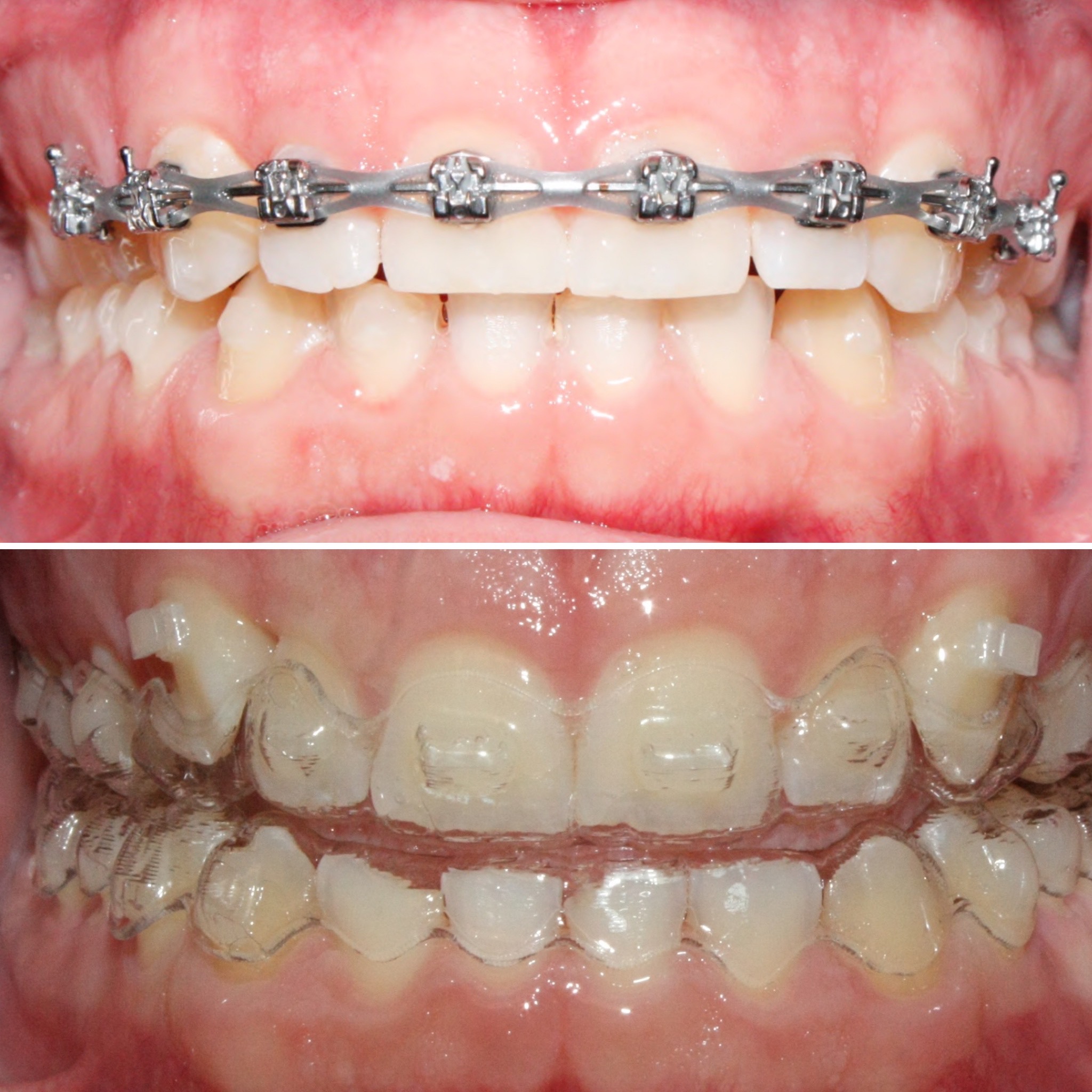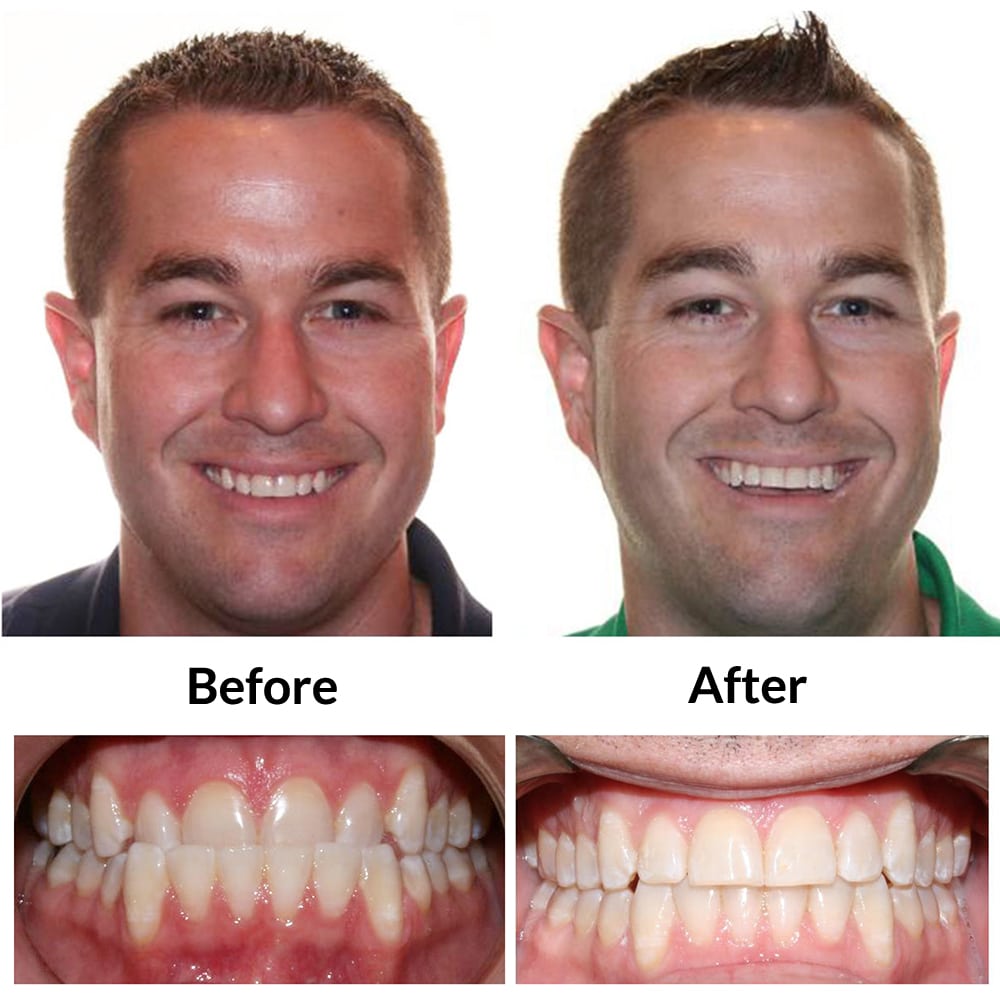Discover the Benefits of Invisalign for a Perfect Smile Change
Discover the Benefits of Invisalign for a Perfect Smile Change
Blog Article
Invisalign vs. Conventional Dental braces: Which Option Is Right for You?
When thinking about orthodontic therapy, the option in between Invisalign and typical dental braces presents a number of important factors that warrant careful analysis. Invisalign supplies a discreet option with removable aligners, while typical braces supply a much more visible yet effective remedy for severe misalignment. Each choice includes distinct advantages and downsides associated with aesthetics, comfort, treatment duration, and price. Recognizing these nuances is vital for making a notified choice that straightens with your individual choices and lifestyle. The question stays: which option will best meet your orthodontic requirements and assumptions?
Overview of Treatment Choices

In contrast, typical braces are composed of metal brackets and cords that are bonded to the teeth. This technique uses continuous stress in time to achieve placement. While efficient for complex orthodontic problems, traditional braces need routine brows through for adjustments and can position difficulties in preserving oral health due to the problem of cleansing about braces and cables.
Both options have their advantages, and the option usually rests on certain oral problems, way of living choices, and person conformity. Inevitably, speaking with an orthodontic expert is vital for determining the most suitable therapy strategy customized to specific needs. Understanding the nuances of each choice can dramatically affect the general success of orthodontic therapy.
Aesthetic Considerations
A significant element influencing the selection between Invisalign and traditional dental braces is the aesthetic charm each therapy provides. Invisalign aligners are crafted from clear plastic, making them virtually invisible when put on.
In contrast, traditional braces are composed of metal brackets and wires, which can be extra visible. While advancements in orthodontic innovation have actually led to the growth of smaller sized brackets and colored elastics, typical braces still keep a more noticeable account. For some people, the visibility of braces might deter them from seeking essential treatment.
Eventually, the option in between Invisalign and traditional braces might depend upon individual preferences concerning aesthetic appeals. Individuals who focus on discretion often favor Invisalign, while those that are much less worried about visibility may select standard dental braces. Recognizing the visual ramifications of each alternative is crucial for making an informed decision that aligns with one's lifestyle and choices.
Convenience and Convenience

In terms of comfort, Invisalign aligners are removable, allowing individuals to appreciate their favored foods without limitation and maintain optimal dental hygiene. Brushing and flossing are streamlined, as the aligners can be taken out during these regimens, whereas traditional dental braces require cautious navigating around cables and brackets.
In contrast, standard braces demand routine adjustments, making them much less convenient for those with busy timetables. In general, the convenience and comfort of browse around this site Invisalign make it an appealing selection for numerous people seeking orthodontic therapy.
Therapy Period and Performance
While both Invisalign and standard braces are reliable in fixing oral misalignments, the period of therapy can vary significantly between both alternatives. Typically, Invisalign treatment can take anywhere from 12 to 18 months, relying on the complexity of the situation. The clear aligners function by gradually changing teeth into their wanted positions, and routine follow-ups with an orthodontist aid ensure development continues to be on course.
In comparison, typical dental braces often require a longer commitment, usually ranging from 18 months to three years. This is because of their set nature and the usage of braces and wires, which can be a lot more reliable for complex cases and serious misalignments (Invisalign). The treatment efficiency of typical braces is well-documented, as they permit for exact changes and better control over tooth movement
Inevitably, the choice between Invisalign and conventional braces may rest on both the anticipated treatment duration and the certain oral problems available. Consulting with an orthodontist is essential, as they can provide tailored referrals based upon specific demands, ensuring the picked approach straightens with preferred outcomes and durations.
Cost Comparison and Insurance Options
Price plays a considerable role in the decision-making process for people taking into consideration orthodontic treatment, whether choosing for Invisalign or traditional braces. Typically, the price of Invisalign varieties from $3,000 to $8,000, while standard dental braces usually cost between $2,000 and $6,000. Variables affecting these costs consist of the complexity of the instance, the period of treatment, and geographical area.
Insurance policy coverage can considerably influence out-of-pocket costs. Lots of dental insurance strategies offer partial insurance coverage for orthodontic treatments, yet the specifics can differ commonly. It is essential for important source people to evaluate their insurance plan to figure out the extent of coverage for either choice. Generally, conventional dental braces may be a lot more regularly covered by insurance strategies compared to Invisalign, which some insurance firms categorize as an aesthetic treatment.
In addition, a number of orthodontic practices use adaptable layaway plan, making both treatment options much more obtainable. Individuals need to inquire concerning potential financing visit the site alternatives and discounts for upfront repayments. Reviewing the overall cost, including insurance coverage advantages and repayment strategies, is necessary for making an educated choice that aligns with both visual choices and budget factors to consider.

Conclusion
In summary, the option in between Invisalign and conventional braces rests on several variables, consisting of visual preferences, comfort, treatment period, and expense. Invisalign supplies a discreet, removable alternative that facilitates dental hygiene and nutritional adaptability, while traditional dental braces may be better for intricate oral concerns and typically come with a lower rate factor. Eventually, consultation with an orthodontist is important to examine private situations and identify one of the most suitable therapy alternative for accomplishing ideal dental alignment.
When thinking about orthodontic therapy, the option between Invisalign and traditional dental braces presents numerous essential factors that warrant cautious assessment.Comparing Invisalign and typical dental braces reveals distinctive treatment alternatives for orthodontic modification.While both Invisalign and traditional dental braces are reliable in dealing with oral imbalances, the duration of therapy can differ dramatically in between the two options.Price plays a considerable role in the decision-making process for individuals taking into consideration orthodontic therapy, whether choosing for Invisalign or typical dental braces.In recap, the choice between Invisalign and typical braces hinges on numerous factors, consisting of aesthetic choices, convenience, therapy duration, and price.
Report this page